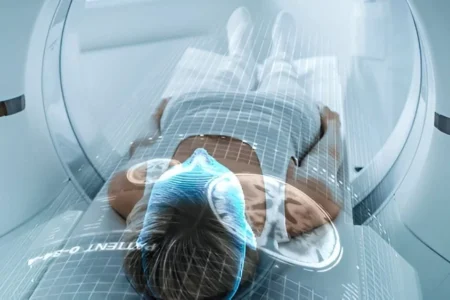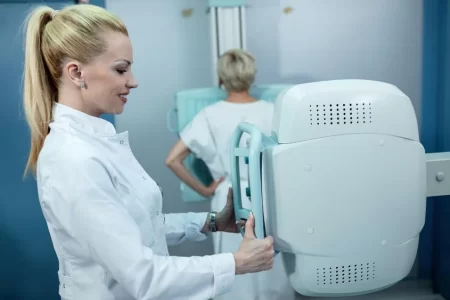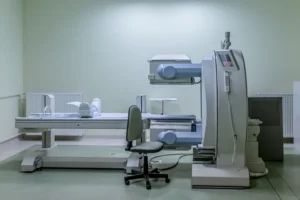Breast Cancer Diagnosis and Early Detection
- Updated on: Jul 29, 2024
- 3 min Read
- Published on Feb 21, 2021

Diagnosing Breast Cancer
Breast Exam
Your doctor will examine both of your breasts and lymph nodes in the armpit to find any lumps or growths or other abnormalities such as changes in the appearance of the skin or breasts.
Breast Ultrasound
Ultrasound is done with a machine that uses sound waves to produce detailed pictures of the structures deep inside the breasts. These images are called sonograms. Ultrasound may help in determining types of lumps of growths such as whether the new breast lump is a solid mass or a fluid-filled cyst.
Mammogram
A mammogram is an X-ray imaging of the breast. Mammograms are generally used to do screening for breast cancer. If an abnormality is found on a mammogram, your doctor may recommend a diagnostic mammogram to further investigate the problem. This provides a more detailed X-ray of the breast.
Your doctor may ask that you get only a breast ultrasound scan done if you are not tool old (such as under the age of 35). The reason for this is that younger women have denser breasts and a mammogram often fails to detect the abnormality. It is not as effective as ultrasound in detecting the breast cancer.
Biopsy
Biopsy is the only way to make a confirmed diagnosis of breast cancer. A sample of tissue cells is taken from your breast that is suspected of cancer and tested to see if it is cancerous. Biopsy samples are sent to a laboratory for investigation where specialists determine for malignancy. Biopsy test can also determine the type of cells involved in the breast cancer such as the aggressiveness of the cancer and whether the cells have hormone receptors or other receptors that can influence the treatment plan.
Biopsies can be done in many ways. Your doctor will decide about the procedure that is most for you based on your condition. These methods may include such as needle aspiration, needle biopsy, guided needle biopsy, vacuum-assisted biopsy (also known as mammotome biopsy), and other methods.
Magnetic resonance imaging (MRI)
MRI is a type of body scanning which involves the use of a magnet connected to a computer-operated machine. MRI machine uses the magnet and high frequency radio waves to create pictures of inside your breast. MRI scan is capable of producing highly detailed pictures of regions inside the breast that are suspected of cancers. A dye is introduced in your body before performing a breast MRI.
The above discussed diagnosis tests are commonly used for screening and diagnosing breast cancer. However, your doctor may conduct other tests and procedures as well used depending on your situation.
Staging of the Breast Cancer
After your doctor has diagnosed the breast cancer, he or she tries to establish the extent and stage of the cancer. This process is called staging. This helps in identifying your prognosis for the disease and the best treatment options suitable for you according to your condition.
Complete information about the stage and spread of your breast cancer is not generally available with the above discussed tests and procedures. The stages of breast cancer range from stage 0 to stage IV. Stage 0 indicates non-invasive cancer or contained within the ducts locally. Stage IV breast cancer (called metastatic breast cancer) indicates that the cancer has spread to other areas of the body such as lymph nodes.
Your doctor may recommend one or more of the following tests to evaluate the stage further:
- Blood tests (such as a complete blood count)
- Computerized tomography (CT scan)
- Bone scan
- Positron emission tomography (PET) scan
These tests are done to investigate if the cancer cells have spread within the breast or to other parts of the body. Whether the cancer is only in the breast or is in lymph nodes or is under your arm, or has spread outside the breast tells about the stage of the breast cancer.
All women do not need all of these diagnosis tests and procedures. Your doctor chooses the appropriate procedures based on your condition, circumstances, and the symptoms that may likely develop.












